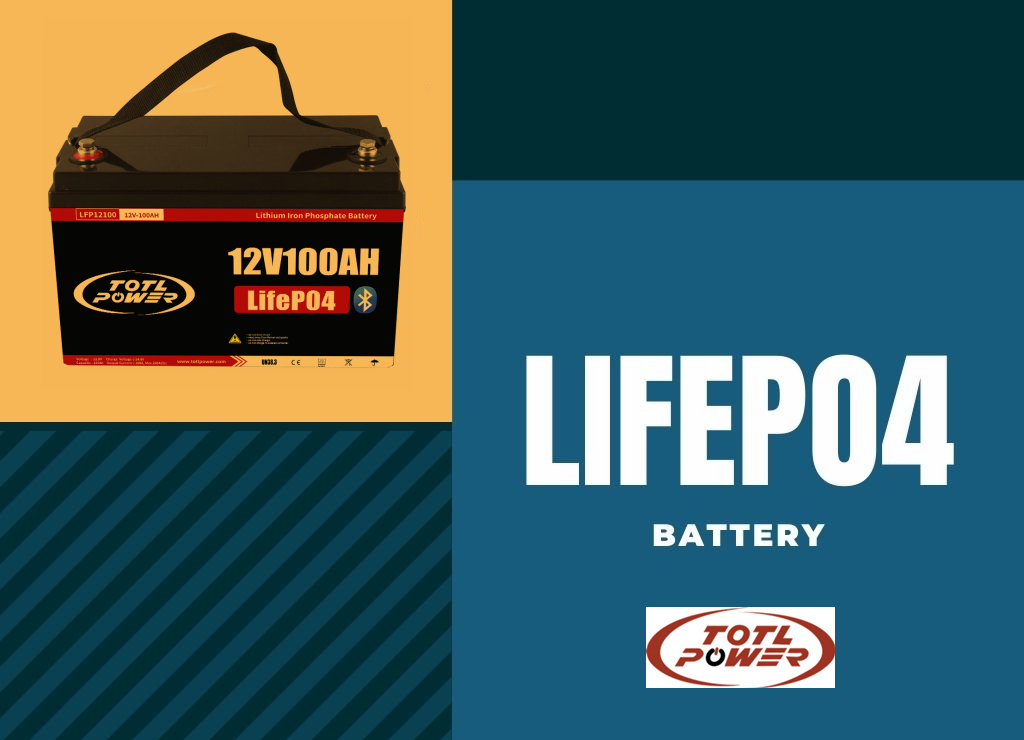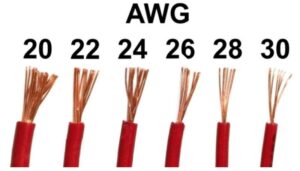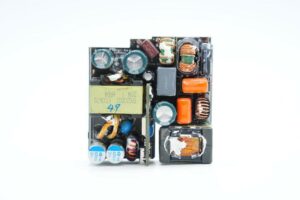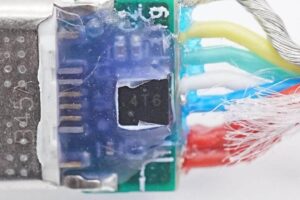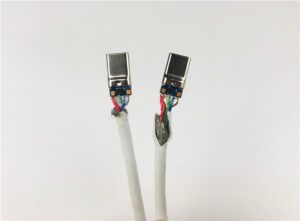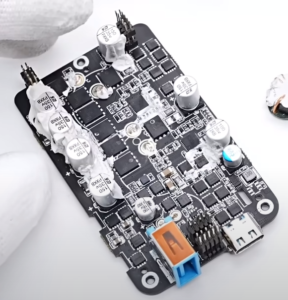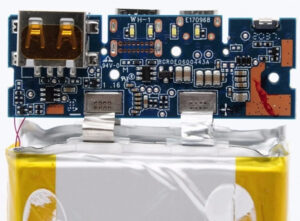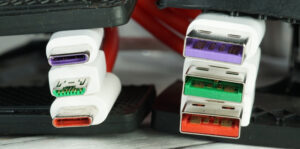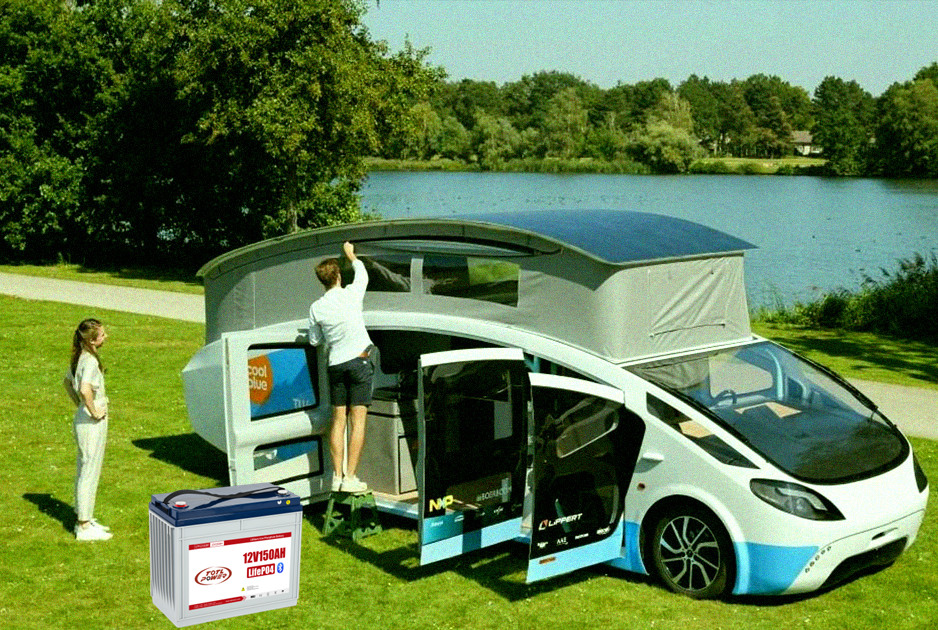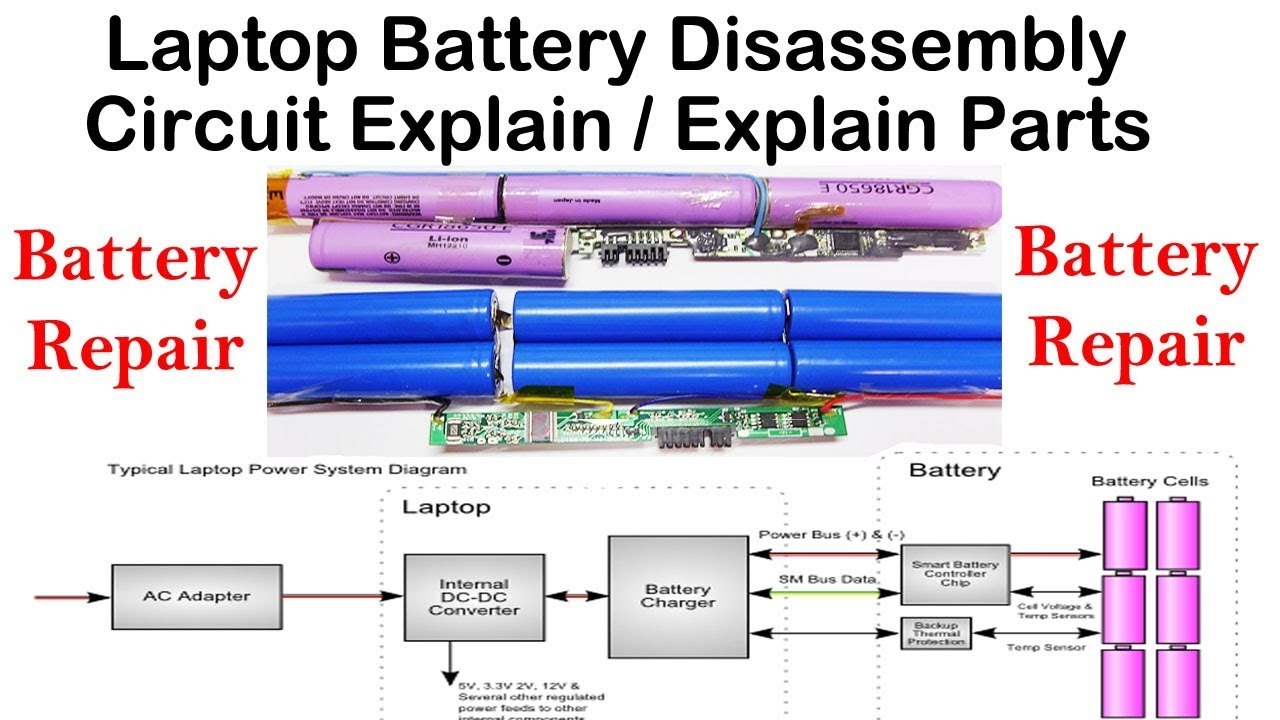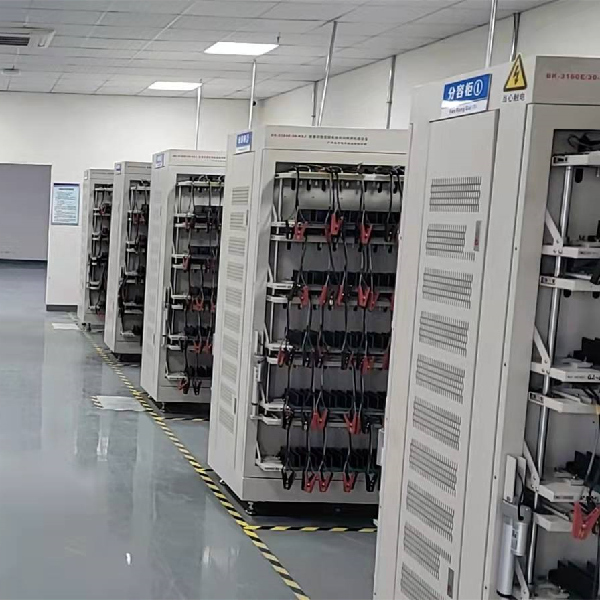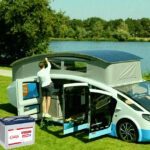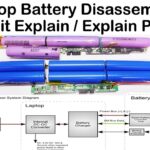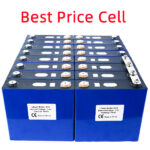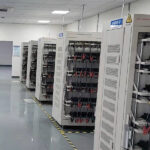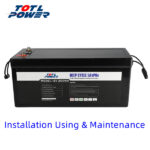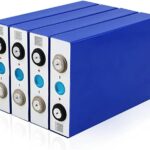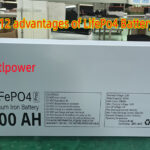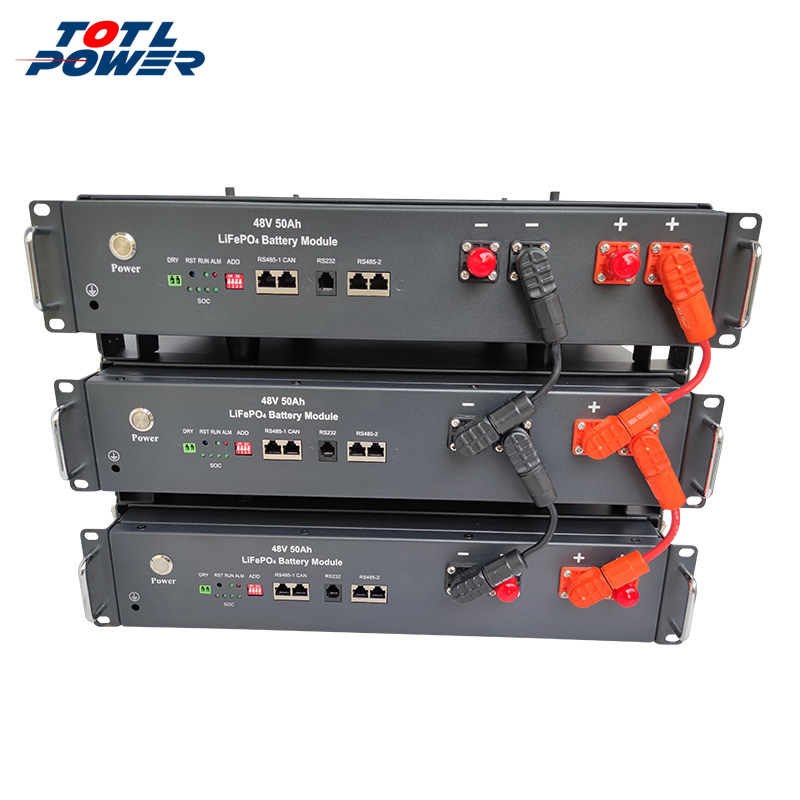LiFePO4 battery continues to dominate the battery storage arena in 2023 thanks to their high energy density, compact size, and long cycle life.
You’ll find these batteries in a wide range of applications, ranging from solar batteries for off-grid systems to long-range electric vehicles.
Despite them being available for some time, questions about LiFePO4 battery still remain:
- How much do they cost?
- Are they safe?
- Are they the best for solar applications?
Whether you’re looking to integrate LiFePO4 batteries or simply someone who wants to know more about the latest advancements in battery technology, this article will provide comprehensive answers to these questions and more.
What is a LiFePO4 battery?
LiFePO4 batteries are a type of rechargeable lithium-ion technology that uses a LiFePO4 cathode and a graphite anode. However, they differ from traditional lithium-ion batteries in their chemistry and construction.
LiFePO4 battery is known for their high energy density, making them a popular choice for various applications, including electric vehicles, renewable energy systems, and consumer electronics.
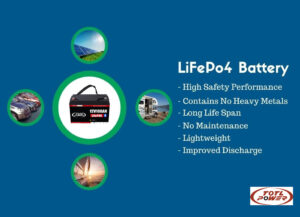
Additionally, they are known for their long cycle life, with the ability to last for thousands of charge and discharge cycles. This makes them a cost-effective choice for applications that require frequent battery replacement.
Compared to traditional lithium-ion batteries, LiFePO4 batteries have a lower nominal voltage of 3.2V, making them safer and more stable. They are also less prone to overheating and are less likely to catch fire due to their excellent thermal stability.
Furthermore, these batteries offer fast charging capabilities, a high discharge rate, and a wide operating temperature range, making them ideal for high-performance applications in various environments.
The main competitor of the LiFePO4 battery
Lithium-ion batteries continue to compete against their lesser lead-acid counterparts. As such, you’ll find LiFePO4 batteries up against AGM and Gel batteries in the marketplace.
LiFePO4 vs Lead Acid:
- Better Capacity
- Discharge DOD 80% vs 50%
- More durable
- Support quick charge/discharge
- Best for solar energy
- Lead Acid safer
- Cheaper
- Recycle More
- More suitable for DIY
- More future
That said, LiFePO4 batteries also face competition within their own ranks — lithium-titanate (LTO) batteries come to mind.
Moreover, hydrogen fuel cells are beginning to compete against lithium batteries for use in EVs.
How do LiFePO4 batteries work?
From a scientific point of view, LiFePO4 batteries are reversible electrochemical storage systems. In other words, they convert electricity into charged chemical particles, called ions, in a reversible process.
Let’s look at the LiFePO4 battery cell in more detail. It’s made of the following 8 essential components:
| Positive electrode (cathode) | Lithium metal oxide (LiFePo4) |
| Negative electrode (anode) | Graphite |
| Electrolyte | Lithium salt |
| Separator | Polymer membrane |
All lithium-ion batteries (LiCoO2, LiMn2O4, NMC…) share the same characteristics and only differ by the lithium oxide at the cathode.
Let’s see how the LiFePO4 battery is charged and discharged.
Charging a LiFePO4 battery
While charging, Lithium ions (Li+) are released from the cathode and move to the anode via the electrolyte. When fully charged, the anode stores more lithium than the cathode.
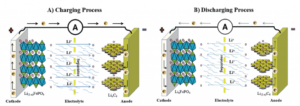
Discharging a LiFePO4 battery
The opposite reaction occurs if a power load is applied to the battery. Lithium ions flow from the anode to the cathode, ultimately storing more lithium than the anode.
Finally, this movement of lithium ions inside the battery creates an electron flow between the two electrodes, generating an electric charge outside the battery.
If you’d like to know more about the electrochemical equations and material science behind the LiFePO4 battery, we highly recommend this free article — it gives a good in-depth explanation.
Is LiFePO4 the same as lithium-ion?
Lithium-ion is a label that describes a certain type of battery based on lithium technology. All lithium-ion batteries take advantage of the electrochemical properties of Lithium as an ion (Li+). In other words, yes, LiFePO4 is a lithium-ion battery.
They only differ by the material used in their electrodes, which is lithium oxide for all of them (LiCoO2, LiMn2O4, LiFePo4).
Therefore, LiFePO4 battery is one of the many different lithium-ion batteries that exist. Some other types of lithium-ion batteries include:
- LiCoO2 (LCO)
- LiNiMnCoO2 (NMC)
- LiNiCoAlO2 (NCA)
- Li2TiO3 (LTO)
Chemists and materials scientists continue to make multiple lithium-oxide variants to create the best lithium-ion battery possible. So far, LiFePO4, created in 1996, is their greatest discovery.
The second most popular lithium-ion battery is the NMC battery, based on Lithium Manganese Cobalt Oxide. Compared to LiFePO4, it has a higher energy density (better storage capacity) and power. It also allows for several thousand cycles and accepts quick charge/discharge. Unfortunately, it’s less safe than LFP batteries and is more expensive.
NMC lithium-ion batteries and NCA (nickel-cobalt-aluminum oxide) are predominantly used in the electric vehicle industry.
Why are LiFePO4 batteries so expensive?
LiFePO4 batteries are known to be expensive, but are they really?
When it comes to energy storage, you cannot just rely on a battery’s retail price. You must also account for the total energy in kWh that the battery can store and release (charge/discharge cycle) during its lifetime.
Diving a battery’s retail price by this value will help you get its levelized cost of storage (LCOS) in $/kWh. This value helps compare the real value of different energy storage systems.
Levelized cost of storage for a 12V LiFePO4 battery
Let’s calculate the levelized cost of storage (LCOS) for using Totlpower’s 100Ah, 12V LiFePO4 battery.
Note to our readers: If you’d like to view more quality batteries like the one mentioned above, check out our article discussing the 7 best storage batteries for solar panels in 2023.
The current retail price for this battery is $309.99. Over a 10-year lifespan, the battery is capable of 6,000 charge/discharge cycles at 80% DOD.
Let’s assume one full charge/discharge cycle per day at a total capacity of 1.2 kWh per cycle.
Using the above information, we can determine that the battery will be able to store/release a total of 5760 kWh over a 10-year period. Therefore, the LCOS for this battery will be 0.05 $/kWh. This is substantially cheaper than the average U.S. residential electricity price (0.156 $/kWh).
In California, the average cost of electricity is 0.26 $/kWh. In addition, electricity prices are continuously increasing (1.7% per year on average over the last ten years).
Can you see what we are getting at? LiFePO4 batteries actually end up being incredibly cost-effective!
Can I save and earn money from a LiFePO4 battery?
You can actually earn money with an Energy Storage System (ESS). An ESS, such as the Totlpower Powerwall, is a plug-and-play box that combines an inverter, solar charger, and battery storage. You can connect these systems to a domestic solar panel array — with monocrystalline panels, of course — and to the electric grid.
California scenario
Even without solar panels, you could charge your ESS during off-peak hours at 0.26 $/kWh, then sell it back — via net-metering — at a higher price to the grid during peak hours.
Let’s do the math: 0.25+0.16= 0.38 $/kWh. You sell it for 0.66 $/kWh. Your profit is 0.28 $/kWh.
You could even earn more if you generate your electricity using solar panels, thanks to solar energy being the cheapest source of electricity.
Bear in mind that this is only a rough estimate, and a more accurate calculation should be performed, but this is how cheap LiFePO4 batteries are in reality.
What applications use LiFePO4 batteries?
Thanks to their high power specs (W/kg), energy density (Wh/kg), and extended life duration (up to 10 years), LiFePo4 batteries have many applications. They are safe enough to be used for both stationary and mobile applications.
Below, I have listed some of the many applications of LiFePO4 batteries:
- Energy Storage systems (ESS).
- Solar batteries, along with solar panels.
- Portable solar generators for camping and DIY systems.
- EV batteries An application that requires high power, storage capacity, and durability. LiFePo4 batteries can provide strong pulses of current during car acceleration.
- Solar water pumping systems.
- Electric bikes and scooters.
Is a LiFePO4 battery safe indoors?
LiFePo4 battery is the safest type of lithium battery.
They are sealed in an airtight aluminum case, specifically designed to withstand temperature, pressure variations, punctures, and impacts.
Therefore, they are maintenance-free, and in addition, they all include a BMS (battery management system).
They come with safety equipment that monitors and controls each individual battery cell. It protects them from overcharging/discharging against short circuits and abnormal temperature fluctuations by disconnecting the affected battery cells. It also balances the battery voltage for an even charging/discharging level.
Can my LiFePO4 battery explode?
As previously explained, LiFePo4 batteries are extremely safe thanks to safety equipment. During normal operations, there is no danger of explosion or ignition, and no chemical leakage will occur.
However, there are 2 situations in which a LiFePo4 could explode:
1. LiFePO4 factory defects
Millions upon millions of LiFePO4 batteries have been made. Naturally, there is a tiny chance of battery failure. It was calculated to be 1 in 10 million — rather small compared to the chance of being hit by lightning (1 in 13,000).
2. LiFePO4 in contact with external heat (over 200°C):
Several studies were conducted to assess the effect of overheating different lithium batteries. It was proven that LiFePo4 is the safest of all lithium-Ion batteries as their temperature rise is minimal. In addition, they will not propagate the fire to other batteries due to the highest thermal runaway.
LiFePo4 batteries will not burn until temperatures above 270°C are reached.
Does LiFePO4 battery need a special charger?
To charge a LiFePO4 battery, you need a dedicated charger with a charging profile (voltage limits) designed for lithium batteries.
However, you can also use a lead-acid battery charger, as the voltage limits are within the acceptable range of a lithium battery.
The charging profile of a LiFePO4 battery is divided into two steps:
- Stage 1: Constant Current
- Stage 2: Constant Voltage
These two stages are similar to the charging profile of GEL and AGM batteries. The main difference is the charging speed. Whereas lead-acid only accept charging speeds of 0.1-0.3C (10 to 30% of their max current capacity), LiFePO4 batteries can charge up to 0.3C-1C (30 to 100% current capacity).
For example, a 12V–100AH lithium battery accepts charging power up to 1000W. The same battery – AGM or GEL technology only accepts charging power of 300W.
Let’s have a closer look at the charging stages of a lithium battery.
Charging profile LiFePO4, stage 1: constant current
During the first stage, the charging current is the highest, and the LFP battery will recover up to 90% of its capacity in 1 to 2 hours.
Charging profile LiFePO4, stage 2: constant voltage
The second stage will help recover the remaining 10% of capacity. It can take around 20min to complete stage 2.
If your battery charger delivers enough current, your lithium battery can be fully charged in 2 to 3 hours. This is much faster than GEL or AGM batteries which need 10 to 12 hours for a full charge.
Note: Fast chargers are hard to find. Currently, the most powerful domestic chargers rarely exceed 400W, such as the Totlpower battery charger.
The best option to fast charge a lithium battery is solar energy. With solar, currents of up to 100 Amps can be pulled in the depleted battery.
How to store a LiFePO4 battery
LiFePO4 battery should be stored in a dry and temperate environment (around 77°F) at 60-80% capacity.
The self-discharge rate is around 2-3% per month.
Ensure the battery’s temperature never falls below 32°F, as it could cause irreversible damage to the lithium battery.
Is LiFePO4 the best for a solar battery?
Currently, LiFePO4 is the best solar battery. It is more compact, stores more energy, and lasts much longer than any other type of battery.
Moreover, it is perfectly suited for solar energy as it accepts fast charging/discharging.
The main limitation of LiFePO4 technology is its degradation at low temperatures (below 32°F), which makes it unsuitable for cold climates.
A modified lithium battery called lithium-titanate oxide (LTO) might be the best alternative to LFP.
LTOs are capable of working from -40°F to 140°F. They have incredible charging and discharging speeds, up to 15C (15x their rated current), allowing a full charge in 15min. On top of that, their life duration is huge, with more than 15,000 cycles.
How to select the best storage batteries for solar panels
Here are six characteristics that all the best storage batteries share:
Tolerant to intermittent charging/discharging
Durable
The best storage batteries on the market are durable. A battery’s durability is rated according to the number of charge/discharge cycles it can withstand. The most recent lithium batteries offer up to 5,000 cycles and 10 years of durability.
Powerful
A solid battery must deliver enough amps to power your appliances. Solar lithium batteries typically deliver 50amps (600W) to 200amps (2400) continuously, with peak power up to 300amps (3600W)
High-capacity
Lithium batteries that are suited to solar panels possess high storage capacities. They can store up to 300Ah (3600Wh) and are 100% usable.
Quick charging abilities
The best solar batteries deliver a high power output. Moreover, they accept large quantities of energy that help them charge solar panels quickly.
Figures range from 50amps to more than 100amps, allowing a solar battery to charge fully within three to four hours.
Price (LCOS)
Levelized cost of storage (LCOS) is the best way to estimate and compare solar battery cost. Sure, the buying price is an important parameter, but it has to be balanced by a battery’s total lifespan.
Final thoughts
It’s safe to say that the LiFePO4 battery is the best battery available.
The LiFePo4 battery technology could be viewed as the biggest technological improvement in electricity storage since the invention of the lead-acid battery more than 100 years ago.
It is paving the way for a revolution in clean energy storage.
However, some necessary improvements still need to be made regarding their energy density, charging speed, and durability. And for certain applications, it already has a strong competitor: the hydrogen fuel cell.

